Dakhla Oasis Egypt travel guide
Dakhla Oasis (Egyptian Arabic: الداخلة El Daḵla, pronounced [edˈdæxlæ], "the inner oasis"), is one of the seven oases of Egypt's Western Desert. Dakhla Oasis lies in the New Valley Governorate, 350 km (220 mi.) from the Nile and between the oasis of Farafra and Kharga. It measures approximately 80 km (50 mi) from east to west and 25 km (16 mi) from north to south.
In ancient times, since the last rainy season that prevailed in the region about 35,000 BC, there were fresh water lakes lived by the Stone Age man, with herds of cows, giraffes, and gazelles. The water springs were overflowing, and the oasis continued until 9000 years ago when these lakes began to shrink and dry, leaving their sediments in what is known as the Playa deposits in the regions of Dakhla Oasis as well as other areas in the Western Desert.
It has a continuity of settlements for about the last 8000 years, but only since 2500 BC, they moved to the Nile Valley but some settlements still exist around the natural springs and flowing water wells.
Deir al-Hagar Temple
Deir al-Hagar Temple It is one of the most important temples in Dakhla, located about 47 km west of Mut. It dates back to the era of the Roman Emperors (Emperor Nero 54–68 CE). It is decorated with sandstone, and pictures and inscriptions on its walls representing thePharaonic Creed. It was built to worship the God Amun. It was called a stag meaning“the Land of the Moon”. The site is surrounded by a wall designed to protect it from the sand dune encroachments.
Deir al-Hagar temple consists of a two-column court and a court of Hepostil with four columns, a vestibule and a sanctuary. Each column is located in the Hippo style Hall with inscriptions belonging to Emperor Titus. There are some interesting basic inscriptions representing religious life. The effects of the painting are visible with some Coptic writings, a clear indication that the temple was later used as a church.
Qaret al-Muzawaka tombs
It is located about 5 km west of Qasr Village and about 37 km from Mut city. It is a cemetery dating back to the Roman era and was discovered by the Egyptian archaeologist Ahmed Fakhri in 1937 (. It contains tombs carved in rock and has a bright inscription representing the oasis and the cultivation ofbarley, palms, birds, embalming, arithmetic and punishment. its name is attributed to the abundance of colors and clarity and decorations.
in fact, the name means “The Decorated Hill”. A few of these tombs are decorated in a mixture of traditional Egyptian and classical styles. In fact, it was in the Roman period in the first and second centuries after the birth. Moreover, many of the tombs are still not excavated. Two of the most interesting tombs belong to Petubastis and Petosiris. In fact, the tombs are outstanding for their exquisite colorful fresco. The tomb of Petubastis consists of a single decorated chamber. It is with recessed shelves which intended to house the mummies of the deceased. On the eastern wall is a portrait of the tomb owner which is painted onto plaster. The ceiling of the chapel was painted with a zodiac in the style of the first century AC.
Al-Qasr Islamic Village
Al-Qasr (Palace in Arabic) Village is considered as one of the most important Islamic archaeological sites in the New Valley Governorate. It is located 22 km north west of Mut. It was the first village to receive the Islamic tribes in the oases in the year 50 AH and the remains of a mosque from the first century AH and flourished in the Ayyubi era. The village was the capital of the oasis and the Palace of the Governor and one of the entrances of the old Islamic Fort dated back to the Ayyubi era.
Minaret of Ayyubi Mosques
Minaret of Ayyubi Mosques, It has a wooden minaret consisting of three floors at the height of 21 meters, and there are wooden thresholds inscribed with Quranic verses. The Islamic school and Al-Sheikh Nasr al-Din Mosque is one of the oldest mosques, and is an ancient building built of mud bricks. The visitors are impressed by the magnificence of the planning of buildings in the Islamic Palace in terms of organization, construction, and planning of the Islamic cities at that time.
The Qila el-Dabba Necropolis. Khentika's mastaba. Dakhla Oasis.
The mastaba of Khentika, governor of the oasis under the reign of Pepi II, is located in the center of the necropolis of the sixth dynasty (2460-2200 BC) where we also find six other large tombs of governors such as that of Ima - Pepi in the south and Khenti-Kaou-Pepi in the north. Its originality is to have a vault decorated with paintings (the deceased and his wife in front of their offering table, scenes of daily life).
stele of Khentika, Roland Unger, Archaeological Museum Balat,
CC-BY-SA-4.0 commons.wikimedia , Qila el-Daba
The Khentika monument consists of two parts:
- The mastaba, in the superstructure, with the funerary chapel where the offerings were presented on the occasion of the festivities.
- Four underground vaults with their access shafts. Khentika were buried there, with funerary furniture made up of jars with food products, alabaster tableware and copper objects. The main vault, looted very early in antiquity, still kept Khentika's skeleton and an apse inscribed with his name. The other three were intact. The objects are now on display in the Kharga museum.
The vaults are built at the bottom of a 15 m high, 10 m deep square pit, dug into the compact red clay that constitutes the oasis floor. To the east, a descent made it possible to evacuate the rubble during the excavation of the well, to later lower the materials during the construction of the vaults. When the vaults were finished, the moat was filled in to ground level and covered with the mastaba (mortuary chapel and outbuildings).
The collapse of the vaults in antiquity and the gradual settlement of the mud fill caused the ruin of the superstructure. A first excavation of the site was made by A. Fakhry in 1972. When the IFAO began cleaning this mastaba in 1986, the almost completely destroyed chapel sank 0.50 to 1.60 m into the pit. The chapel was rebuilt thirty meters to the east of its original location to allow excavation, restoration of the vaults and access to the underground esplanade for visitors.
Necropolis of el-Balat, location of Qila al-Dabba, oasis of Dakhla. To make this post I used photos taken at el-Balat necropolis but also photos taken at the New Valley Museum in Kharga. The grave in question is that of Governor Khenty-Ka VI dynasty. The tomb, which collapsed burying everything, has been restored by the famous Egyptologist Ahmed Fakhry.
Darb al-Ghabari Inscriptions
On the entrance to the Dakhla Oasis where sandstone blocks take many forms, somerock art painting (rock inscriptions) from the prehistoric man since about 5000 BCwere recorded. The human drawings are depicted after the introduction of agricultureand grazing depicting the palm and the animals.
Bashandi Village
It is a small village built in Pharaonic style by green bricks. An ancient temple buriedin the sand is likely to be from the 19th Dynasty and then was restored in the region ofRamses IX. There are also a Roman cemetery of the rulers of this region since the firstcentury AD. In the south of the village is a temple in the spring of the Roman era andbuilt of sandstone. In the village, there is an Islamic Cemetery of Sheikh Bashandi,after whom the village was named. He was the village leader in the Turkish era. Histomb was built of ancient Pharaonic temple stones that were used in the village andwere used as a prayer site.
Balat Village
It is located above a high hill. Its streets are narrow and domed of palm wood and palm trees and divided into the streets of families with wooden inscriptions on their gates, specifying the family name, the date of construction and the verses of the HolyQuran.
The Pharaonic Tombs in Balat
At the distance of one kilometer from the Balat Village, where there are five terraces made of mud brick above each other, such as the Pharaonic tombs next to otherRoman tombs, as well as the gate of the tomb of the governor of the area headed by two small animals and a door line Hieroglyphs refers to the era of the ancient state VIth Dynasty 2430 BC. This is evidenced by the fact that the area of Balat was the center of the oasis in the Pharaonic times and was where the royal court wasestablished in the era of Kings Papy I and II.
In the area of Balat on the eastern Dakhla Oasis the archaeological mission of the French Institute for Oriental Archaelogy has uncovered a large area consisting of various camps dating from the early 4th Dynasty (ca. 2600 BC), which were briefly but intensively occupied. These are understood to have served as residential base camps for some of the indigenous (and not yet fully sedentary) population of the oasis, the so-called Late Sheikh Muftah group.
Little is known about this rather enigmatic group, but the excavations at Balat have revealed for the first time a well-preserved intra-site stratigraphy with hitherto unknown dwelling features for Sheikh Muftah contexts. The data gathered here is based on analysis of the features, the material culture and in-depth scientific studies. The new evidence offers not only hints about local crafts, food production and environmental conditions in Balat, but also represents a new contribution to ongoing discussions on subsistence and patterns of mobility of non-sedentary groups in the Western Desert. This has given archaeologists a glimpse of the lifestyle of the Sheikh Muftah group, and also, for the first time, shone a spotlight on daily life in a camp site in the oasis depression. The date of this occupation in the Early Old Kingdom falls into a period when Egyptian Pharaonic presence was just beginning to be evident in archaeological data. Cross-cultural contacts between the Balat Sheikh Muftah community and the Egyptian Pharaonic population, both within the oasis and into the Nile Valley are also in evidence and contribute to the discussions on transcultural exchange and assimilation processes in the oasis.
Gilf Kebir Area
Gilf Kebir is a huge massif plateau located 150 km north of Gabal Uweinat, rising 300 m above the desert floor and reaching almost 1100 m asl. It is on the border between the Western Desert of Egypt and the Libyan Desert, The plateau disappears into the Great Sand Sea to the north.In the following subsections, a brief description of some areas will be given.
1,600 km southwest of Cairo,1,050 km southwest of the White Desert.
The site of the "Great Gilf Plateau", about 1,000 meters above sea level, and its area is 48,523 km .
The Gilf El Kebir Reserve is considered the largest meteorite field in the world, and it contains a unique glassy silica .
There are mountainous areas, deep narrow valleys, and chains of the Great Sand Sea extending from north to south.
There are 11 species of mammals, 10 species of birds, and 75 species of wild plants There are 4 caves, all of them have archaeological drawings .
The Stone Age man (Neanderthal man) lived in it when there were rivers and gardens. The Gilf El Kebir National Park is a prime example of climate change .
El Gilf El Kebeer Reserve
The reserve is located in the southwestern part of the New Valley Governorate and enjoys a unique cultural heritage, environmental and aesthetic values of distinguished international importance, as it includes natural elements, some of which date back to prehistoric times. The reserve also includes vast plains of sand dunes and caves. Nubian sand rocks, ancient volcanic craters, mountainous areas, deep valleys, and the Great Sand Sea chains extending longitudinally from north to south. The area contains fields of meteorites that interacted with the earth, forming the largest field of meteorites in the world. There is a unique glass silica and has a vegetation cover consisting of shrubs at Jabal Abdul Malik and the neighboring valleys, it is the only refuge in the Western Desert that supports the life of wild herbivores. It also contains many species of birds, wild reptiles and wild mammals, including the deer, the sand fox and the roar ram.
Cave of Swimmers in wadi Soura - Egypt
The Cave of Swimmers or Wadi Sura Swimmers is a cave in southwest Egypt, near the border with Libya, in the mountainous Gilf Kebir region of the Sahara Desert. It was discovered in October 1933 by the Hungarian explorer László Almásy. It contains rock painting images of people swimming estimated to have been created 10,000 years ago during the time of the most recent Ice Age. Almásy devoted a chapter to the cave in his 1934 book The Unknown Sahara. In it he postulates that the swimming scenes are real depictions of life at the time of painting and that there had been a change in climate since that time.
This theory was so new at that time that his first editor added several footnotes, to make it clear that he did not share this opinion. The cave is mentioned in the book The English Patient and the film based upon it. The cave shown in the film is not the original but a film set created by a modern artist. Substantial portions of the cave have been irreversibly damaged by visitors in the years since the film was released. Fragments of the paintings have been removed as souvenirs, and some surfaces have cracked after water was applied to 'enhance' their contrast for photographs. Modern graffiti has been inscribed upon the wall, and tourist littering remains a problem. Steps have been taken to reduce future damage by training guides and clearing litter from the vicinity, but this important rock art site remains fragile, and risks future disturbances as tourist traffic to the region.
Wadi Bakht Gilf Kebir western desert Egypt
in stone age times, the valley was blocked by a natural dam of sand, which still is to be seen today. The dam created a lake and stone age people settled at the shores. When the dam broke, the stone age settlers obviously had to leave the valley. The site was explored by the German Heinrich Barth Institute Cologne. Be careful when entering the site west of the dam and do not take anything away!!
Abu Ballas Area
During his trip from Dakhla Oasis to Gilf Kebir Plateau, Ball (1927) discovered overone hundred big jars located in a remote area south of Dakhla Oasis. It is located about70 km on the road to the east of Uweinat project and then the deviation westward for a distance of 180 km towards the plateau. This area was served as a station or point of concentration for groups of invaders or thieves who come from Kufra Oasis in Libya, seeking the looted oases of looting and robbery. In the absence of drinking water in the distance from Kufra to Dakhla, these invaders used this area to leave pottery vessels filled with water in a big vessel called Ballas in their journey back and forth from to supply water in the middle of the road to ensure their drinking waterin the desert. As usual, the invaders came from Libya to Dakhla, followed by one ofthe citizens from Dakhla Oasis who knew the secret of Abu Ballas. A number of the inhabitants went out from Dakhla to break the pottery vessels, and pouredthe water on the ground. However, some authors dated the pottery materials to theLate Predynastic or Early Dynastic period, Ramesside Dynasty of the 12th-centuryBC . Pharaonic influence can also bedetected in two rock engravings below the top of the hill, which were discovered byPrince Kemal el Din in 1924 and later recorded by Hans Rhotert .
source :
To the Northwest of Gebel Quatrani North of Fayoum Oasis is Abu Ballas, Father of Pots, first discovered by Prince kamal al Din in his Desert wanderings early in this century.Located on the Caravan trail that linked Wadi el Natroun and Wadi el Rayan to the South West.Abu ballas was obviosly a major station where caravans stopped to rest.it is 64 Km's from Qasr el Sagha in the middle of the Desert. The Pots scattered around this area date from the Roman Era and consist mainly of smashed Amphorae. There is a second Abu ballas Southwest of Dakhla Oasis on the way to Gilf el Kebir and Kufra Oasis in Libia.Recently i have discovered a similar Abu Ballas site in the South West of Wadi el Rayan Park and i think it was another Caravan Route to link Baharia Oasis and the New Valley with the City's up North.

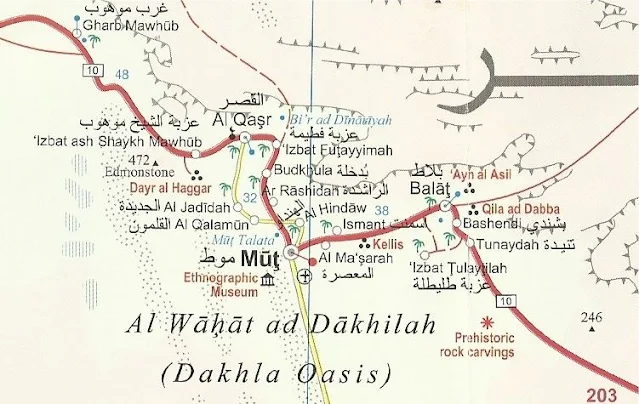
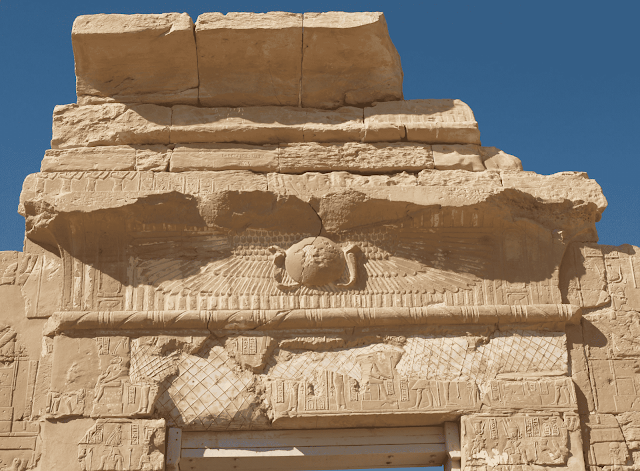
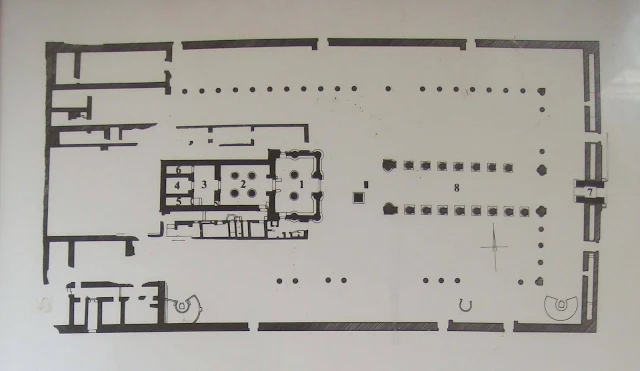


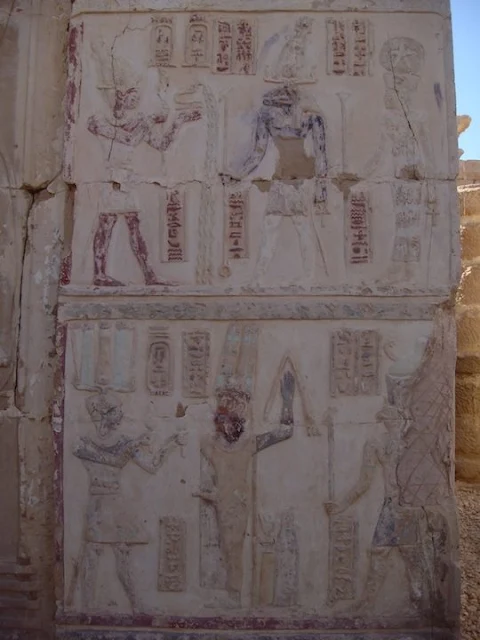
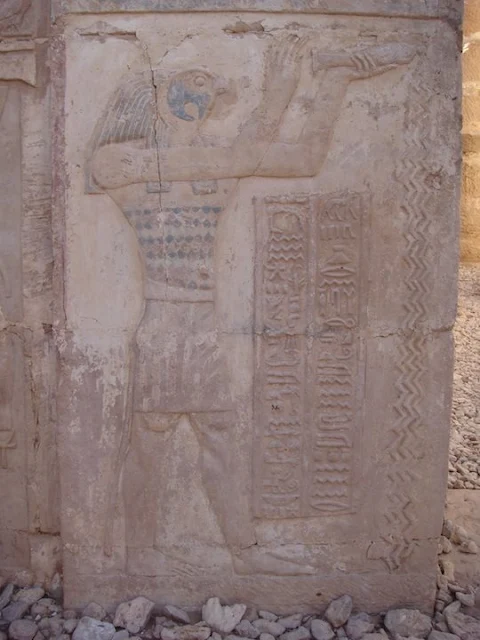






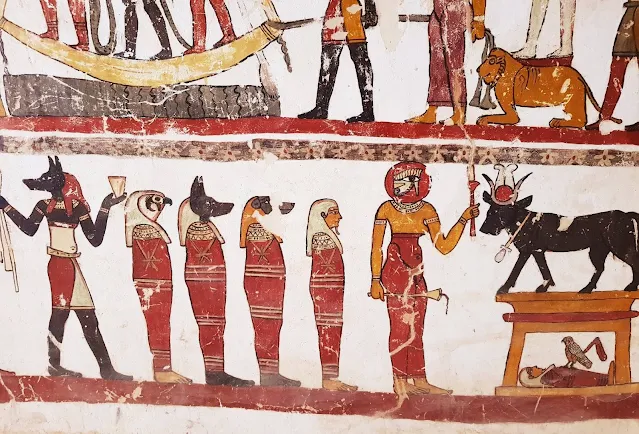

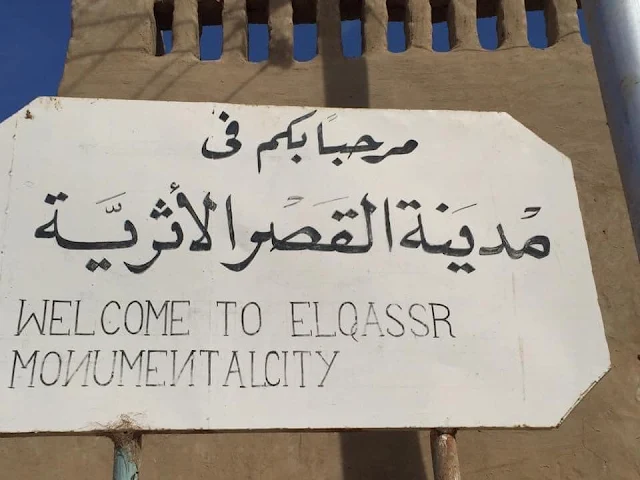
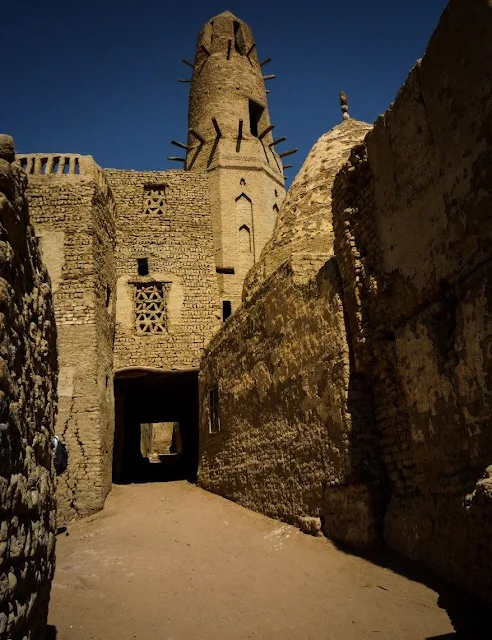
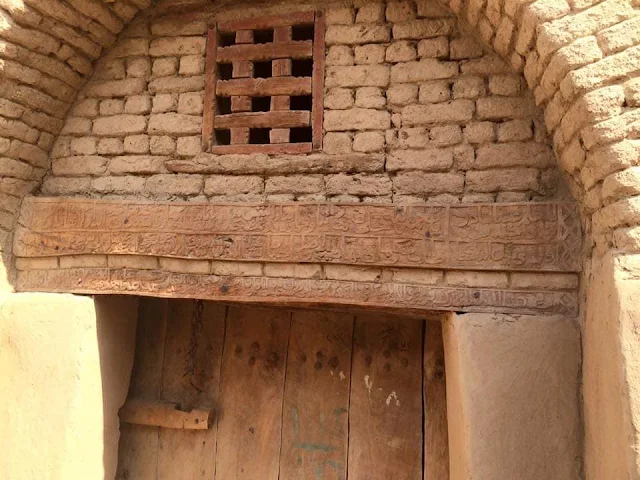

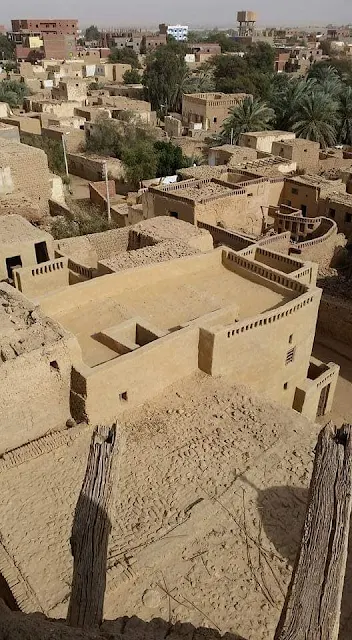
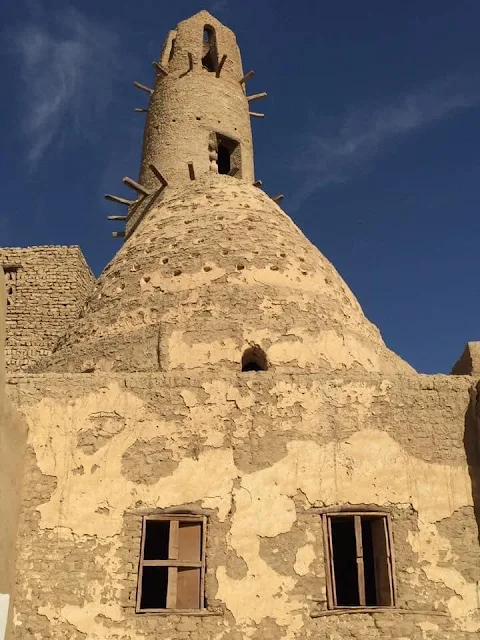





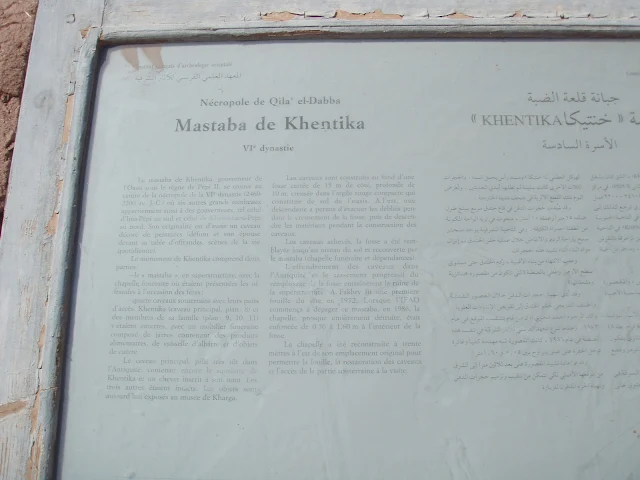



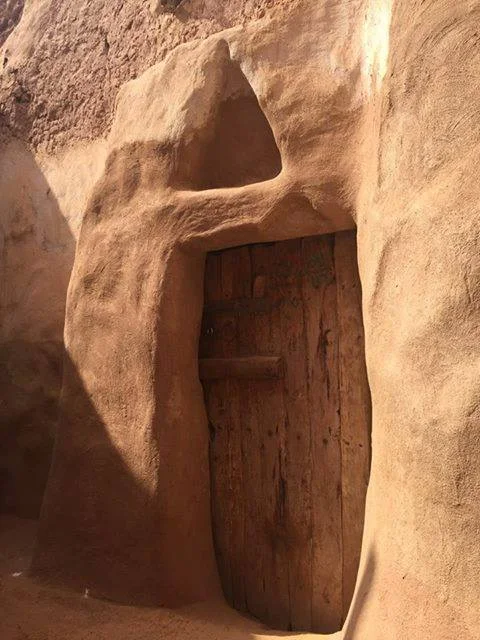


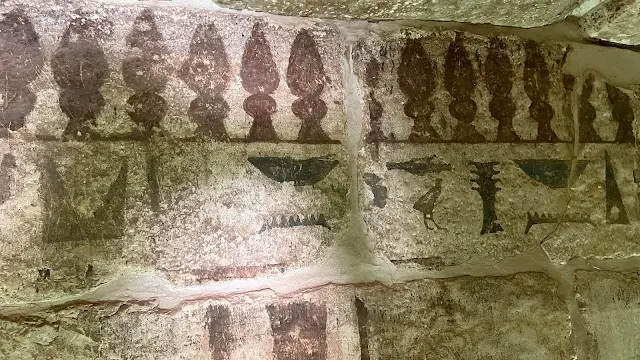


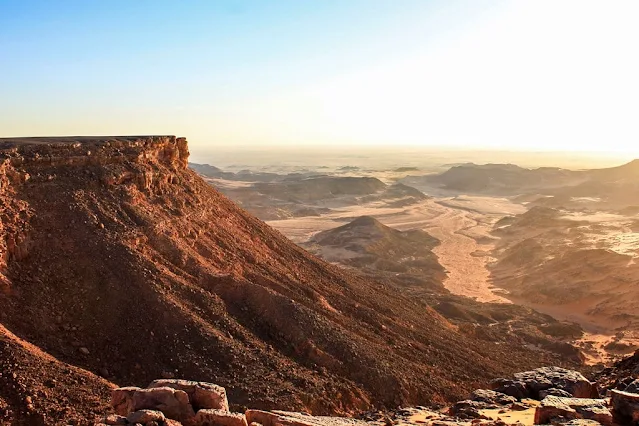





No comments:
Post a Comment